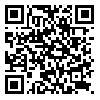Volume 4, Issue 2 (3 2006)
sjsph 2006, 4(2): 45-58 |
Back to browse issues page
Download citation:
BibTeX | RIS | EndNote | Medlars | ProCite | Reference Manager | RefWorks
Send citation to:



BibTeX | RIS | EndNote | Medlars | ProCite | Reference Manager | RefWorks
Send citation to:
Tousy H, Holakouie Naieni K, Mahomoudi M. Designing and application of a model for assessing work - related musculo-skeletal hazardous factors in industrial units in the city of Babol, 1382. sjsph 2006; 4 (2) :45-58
URL: http://sjsph.tums.ac.ir/article-1-207-en.html
URL: http://sjsph.tums.ac.ir/article-1-207-en.html
Abstract: (9930 Views)
Background and Aim: Designing, presenting and implementing a model for assessing work-related risk factors for musculoskeletal disorders and subjective pain, using a combination of Quick Exposure Check (QEC) and the Body Mapping Questionnaire in Babol city in 1382.
Nowadays, Work-Related (WMSDs) are considered to be the most common occupational disorders in Iran. Because of their debilitating potential, it is necessary to find a quick, user-friendly and valid technique to assess risk factors for WMSDs in this country.
The city of Babol has a larger number of industrial centers in comparison with other cities in Mazandaran province. Therefore, it is surprising that there are virtually no reports of WMSD cases in the city. There is a need for a tool capable of showing the real number of cases and evaluate WMSDs in the city.
Material and Methods: It is hoped that the Quick Exposure Check and the Body Mapping Questionnaire, when used in combination, will constitute a highly effective tool for the detection and prevention of a wide range of work-related musculoskeletal disorders. In this survey we try to show the utility and usability of a designed job assessing combination model in a factory in Babol city with at least three results.
Results: 1) We show that not only the number of WMSD cases in the city is not zero, but that there is indeed a substantial amount of disease among industrial workers. 2) According to these findings and other subjective findings of pain, it is urgent to determine the severity of the problem and to recommend appropriate ergonomic interventions (according to QEC’s action level score) accompanied by Body mapping Questionnaire as soon as possible. 3) Considering the significant correlation between QEC action level and subjective findings of pain in the Body Mapping Questionnaire, (Spearman’s rho > 0.5), the model is very useful in periodic examination of workers in factories.
Conclusion: We hope that this highly valid model (QEC/Body mapping) will prove useful in improving the health and thus the quality of the current workforce in the country.
Material and Methods: It is hoped that the Quick Exposure Check and the Body Mapping Questionnaire, when used in combination, will constitute a highly effective tool for the detection and prevention of a wide range of work-related musculoskeletal disorders. In this survey we try to show the utility and usability of a designed job assessing combination model in a factory in Babol city with at least three results.
Results: 1) We show that not only the number of WMSD cases in the city is not zero, but that there is indeed a substantial amount of disease among industrial workers. 2) According to these findings and other subjective findings of pain, it is urgent to determine the severity of the problem and to recommend appropriate ergonomic interventions (according to QEC’s action level score) accompanied by Body mapping Questionnaire as soon as possible. 3) Considering the significant correlation between QEC action level and subjective findings of pain in the Body Mapping Questionnaire, (Spearman’s rho > 0.5), the model is very useful in periodic examination of workers in factories.
Conclusion: We hope that this highly valid model (QEC/Body mapping) will prove useful in improving the health and thus the quality of the current workforce in the country.
Type of Study: Research |
Subject:
General
Received: 2004/06/15 | Accepted: 2005/07/13 | Published: 2013/08/11
Received: 2004/06/15 | Accepted: 2005/07/13 | Published: 2013/08/11
| Rights and permissions | |
 |
This work is licensed under a Creative Commons Attribution-NonCommercial 4.0 International License. |





